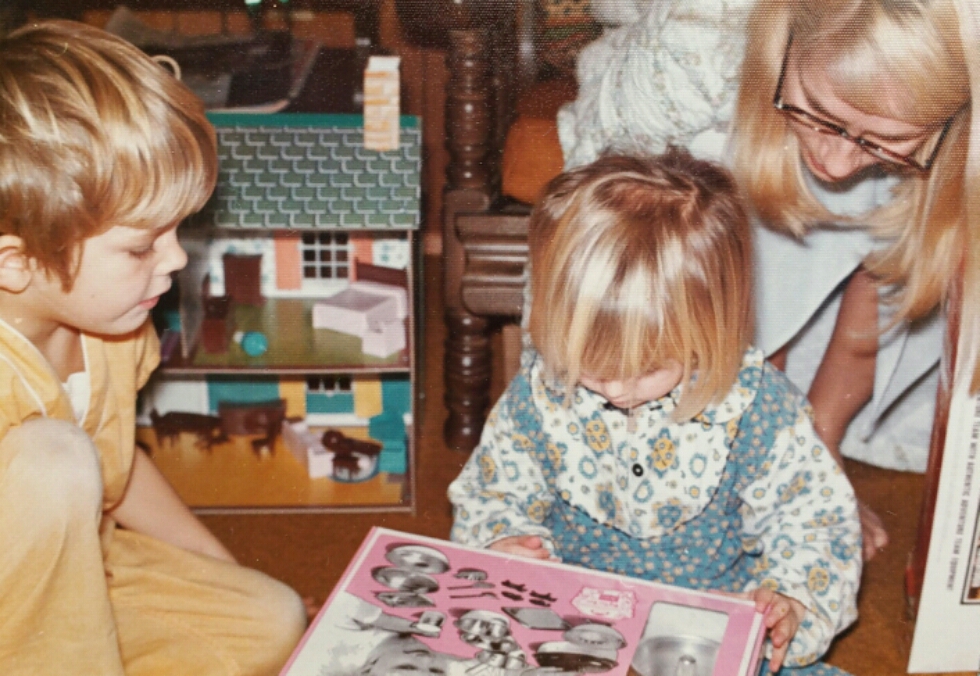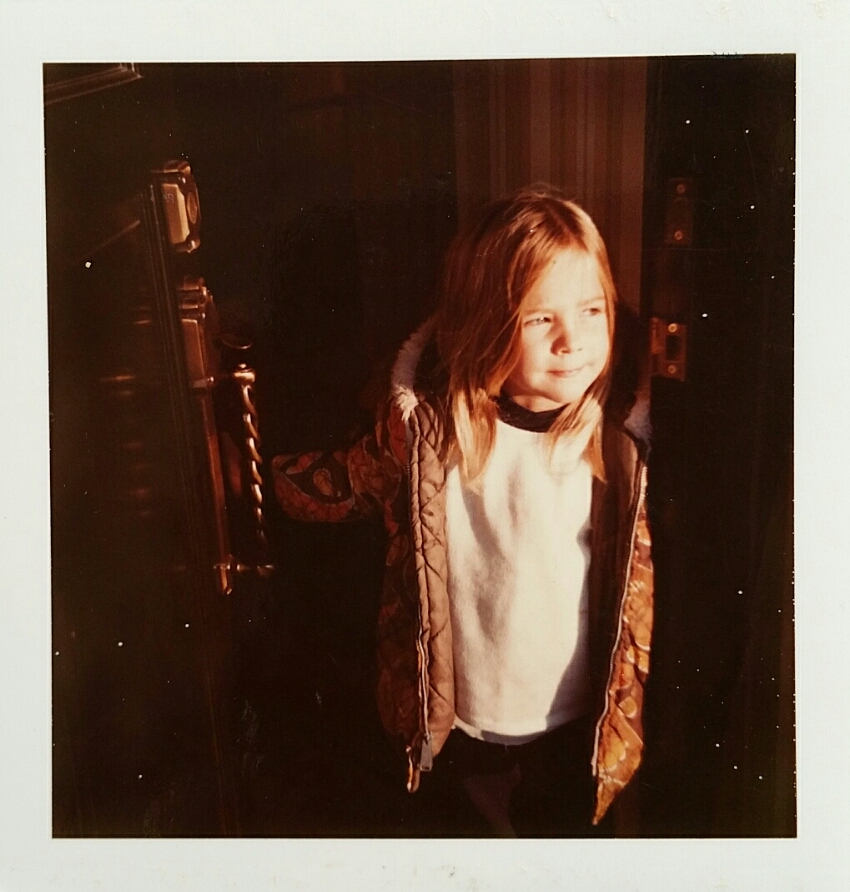Red brick with light sand mortar blurs past. A little boy wearing blue is walking next to me. I am moving along quickly, but I am not walking.
I describe this scene to my mother, who explains this would have been a day during the first few months of my life.We lived in an apartment in Woodbridge Virginia. My parents had only one car at the time and mom walked to the grocery store near our home. She would push me in the stroller as my brother walked beside. She told me how she would fit the groceries around me for the trip back.
How I can have a memory from my life as an infant, even if a little fuzzy, amazes me.

An interest and hobby of mine is studying neurology, and the mysteries of how our brains work. Recently I spent my quiet mornings reading more specifically about childhood memories. I am curious about what makes some memories stick and others completely escape. My next few memories would have happened around age 3 or 4, then not many more till about age 7-8. Which is more typical for most people.
When I think back to the furthest memory I can recall, many times it will be anchored by a photograph, that was taken. The last time I may have seen that snapshot could have been over 30 years ago, but it helped the memory stick and be available for recall. When we view a single photo from an event, this can unlock details that have been filed away. People who were there, but not in the picture, the weather that day, food you ate or other emotions from that general time in your life.
As I have been studying this subject, I came across one of the best analogies that explains why only few memories can be recalled from before age eight. It has to do with the synapses and connections in the brain not being fully developed. It was described as each little bit of memory information as pasta being drained in a colander. The younger we are, the information is like tiny pieces of orzo pasta and the colander has large holes in it, where most of the pasta just passes through, with only a couple pieces sticking to the inside. As we get older, the holes get smaller and the pasta larger, therefore much more of the experience and memory sticks and can be stored for recall.
Few of these connections are fully developed as infants and children. This is where the experiences happen, then are transferred to storage in your brain that can be recalled later. The more emotional an experience is, the higher chance the memory can be recalled later in life.
Studies have also revealed that children whose mothers were very vocal in telling stories of their past as they grew, reinforced the detail and quantity of memories. Some memories we have are just remembering the stories or photographs and not the actual experience.

I have always placed a big priority on photographing life’s events as they happen. There is an entire room in my parent’s house, filled from floor to ceiling with boxes of photos from my past forty-five years and six external hard drives connected to my computer storing the last ten years of digital images I have taken. Today, nearly everyone you know has a cell phone camera at the tip of their fingers twenty four hours a day. Taking snapshots of life is now what we all do several times in a day. The biggest problem is storing these images or printing them for later viewing. Most pictures taken today are not backed up or printed. There are several ways to do this, but few are systematic enough to actually make happen. Even if images are automatically being sent to cloud storage, in thirty years will you still have access to them?
Not being a neurologist, I have no solid scientific basis for a theory that I have. But it seems to me that reliving our past through ongoing storytelling, viewing photographs and videos of our life’s experiences, would keep the neural pathways and synapses connected and active. I am curious to know if this helps in cases of Alzheimer’s and dementia.
A few weeks ago as I was researching this topic, I saw a video on Facebook that shows a 102 year old woman viewing videos of herself as a professional dancer for the first time ever. Her response was fascinating as she tapped her hand to the music, then began to tell the stories of her life at that time. If you have 7.5 minutes, you really should watch it, it’ll make you smile. https://youtu.be/bktozJWbLQg
This is something that I may revisit and write about again as I continue studying it. Till then will you share with me in the comment section your earliest childhood memory?



Hi Wen–This is a topic I’ve ruminated over many times and tried to suss out through discussion, art, brainstorming. I do wonder how the ease of iphone digital photography is molding our memories. My earliest memory is like a moving impressionist painting. I grew up in Iowa and the scene is yellow-gold, sunlight streaming down. I see my older brothers running out into a field. I’m sitting in a baby pool. My mom verified that memory–we had a big field behind an apartment where we lived when I was little. She said I couldn’t have been much more than a year old in that memory. Thanks for stirring up some good memories. I trust you’ve read some Oliver Saks in your research…?
Thank you for sharing your memory and for telling me about Oliver Saks. I had not followed him, but looks like his new book will be in my hands by the end of the week! He seems like a fascinating person and I am excited to read his work.